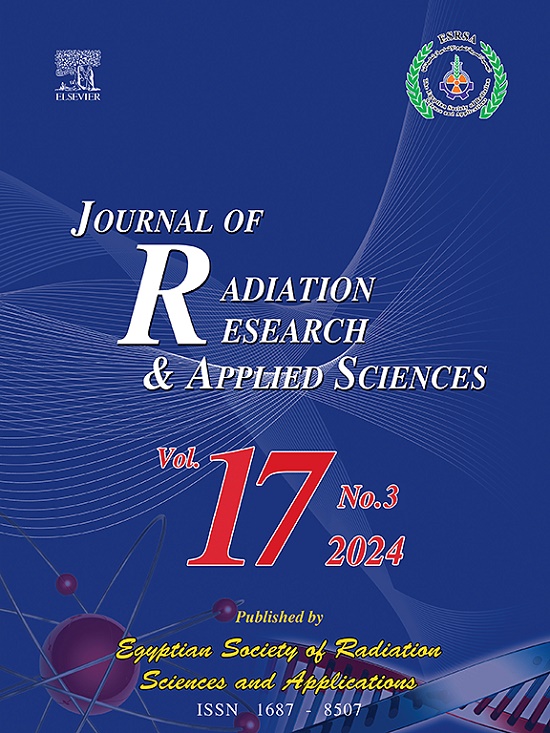Optimizing radiative flow of trihybrid nanofluid with autocatalytic chemical reaction using Cattaneo-Christove heat flux model for industrial heat transfer applications
IF 1.7
4区 综合性期刊
Q2 MULTIDISCIPLINARY SCIENCES
Journal of Radiation Research and Applied Sciences
Pub Date : 2025-02-13
DOI:10.1016/j.jrras.2025.101334
引用次数: 0
Abstract
In this study, the Hamilton–Crosser thermal conductivity model is used to analyze the effects of Marangoni convection on the 3D radiative flow of a trihybrid nanofluid across a rotating disk using the Cattaneo-Christove heat flux model. A trihybrid nanofluid consisting of , , and silicone oil as the improper liquid is used. One of its primary applications is to improve the efficiency of cooling systems, heat exchangers, and energy harvesting tools in solar panels, electronic components, and nuclear reactors. Furthermore, by optimizing fluid-based cooling in high-performance systems, the model maximizes thermal conductivity and minimizes entropy generation to generate energy-efficient designs for microfluidic devices, vehicles, and airplanes. It also applies to processes in chemical engineering like catalytic reactors and heat control in advanced material processing. The bvp4c method is apply to resolve the governing ordinary differential equations numerically. The main consequences of the significant emerging factors against included sectors are explored through the employment of graphic representations. The higher the Marangoni convection parameter, the higher the rates of mass and heat transmission and the skin friction.
基于cattaneo - chri炉灶热流密度模型的三杂化纳米流体自催化化学反应辐射流优化
本研究采用Hamilton-Crosser导热模型,采用Cattaneo-Christove热流模型分析了Marangoni对流对三杂化纳米流体在旋转圆盘上三维辐射流动的影响。采用由ZrO2、SiO2、MoS2和硅油组成的三杂化纳米流体作为不当液体。其主要应用之一是提高太阳能电池板、电子元件和核反应堆中的冷却系统、热交换器和能量收集工具的效率。此外,通过优化高性能系统中基于流体的冷却,该模型最大限度地提高了热导率,最大限度地减少了熵的产生,从而为微流体装置、车辆和飞机产生了节能设计。它也适用于化学工程的过程,如催化反应器和先进材料加工中的热控制。应用bvp4c方法对控制常微分方程进行数值求解。重要的新兴因素对包括部门的主要后果是通过使用图形表示进行探索。马兰戈尼对流参数越高,传质率、传热率和表面摩擦率越高。
本文章由计算机程序翻译,如有差异,请以英文原文为准。
求助全文
约1分钟内获得全文
求助全文
来源期刊

Journal of Radiation Research and Applied Sciences
MULTIDISCIPLINARY SCIENCES-
自引率
5.90%
发文量
130
审稿时长
16 weeks
期刊介绍:
Journal of Radiation Research and Applied Sciences provides a high quality medium for the publication of substantial, original and scientific and technological papers on the development and applications of nuclear, radiation and isotopes in biology, medicine, drugs, biochemistry, microbiology, agriculture, entomology, food technology, chemistry, physics, solid states, engineering, environmental and applied sciences.
 求助内容:
求助内容: 应助结果提醒方式:
应助结果提醒方式:


